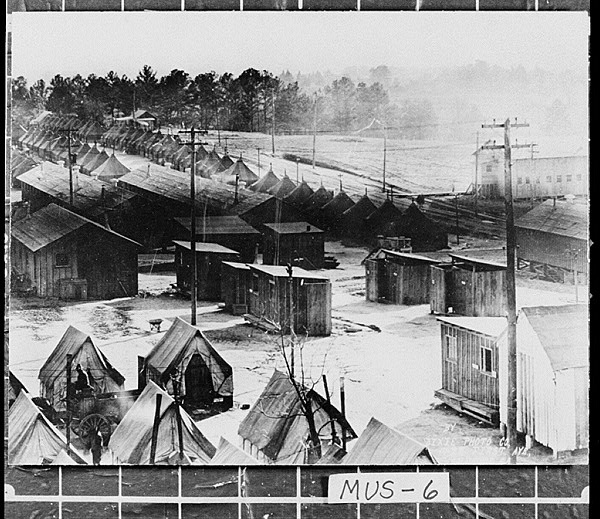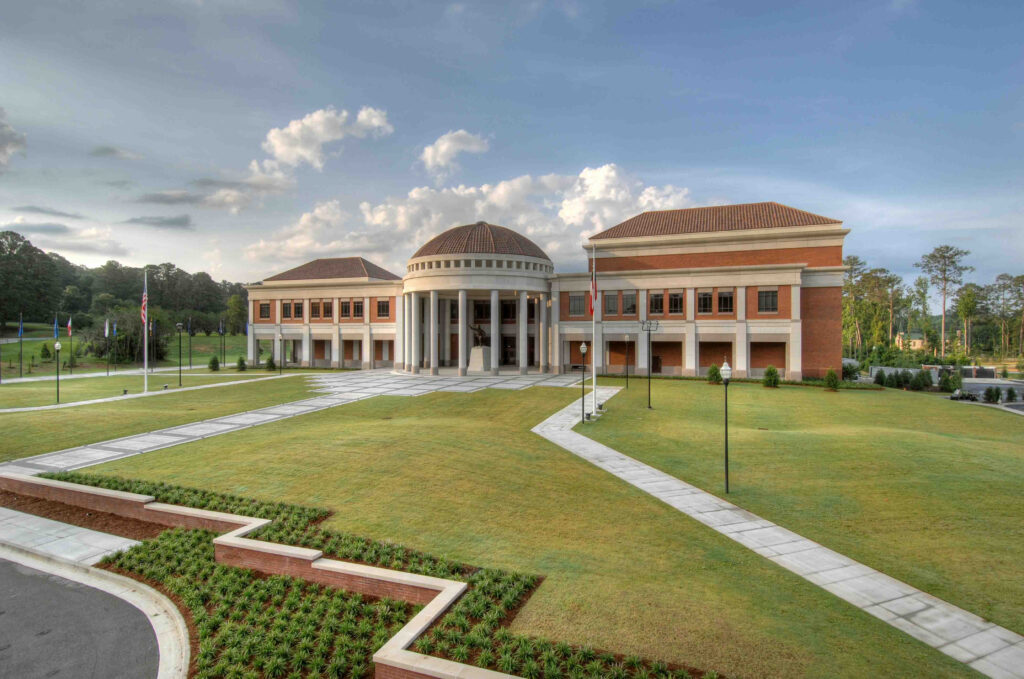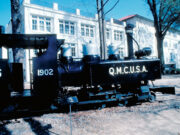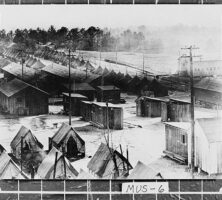Fort Moore, home of the U.S. Army Infantry, is adjacent to the city of Columbus in southwest Georgia.
About 35,000 military and civilian personnel work on the installation, and its estimated economic impact to the region is $4.75 billion. Built on the area originally occupied by the Dawson Artillery during the Civil War (1861-65), the post encompasses 287 square miles of Chattahoochee and Muscogee counties. The installation was named Fort Benning until 2023, when it was renamed to honor Lieutenant General Harold “Hal” Moore and his wife, Julia Moore.
Early History
Efforts to establish an infantry school date to 1826, when Major General Edmund P. Gaines persuaded the War Department to establish an infantry school at Jefferson Barracks near St. Louis, Missouri, but the school closed after two years. No further attempts to establish a similar facility were undertaken until 1881, when General William T. Sherman, commanding general of the army, established the School of Application for the Infantry and Cavalry at Fort Leavenworth, Kansas, to educate officers. In 1907, at the urging of Lieutenant General Arthur MacArthur, the army established the School of Musketry at the Presidio of Monterey, California, to train soldiers in marksmanship.
The School of Musketry was transferred in 1913 to Fort Sill, Oklahoma, but its development there was interrupted by the decision to send troops to the Mexican border to fight outlaw raiders. The school’s operations were curtailed, and the army overall suffered from a severe manpower shortage. At the entry of the United States into World War I (1917-18), government officials recognized that Fort Sill was not large enough to accommodate the training of both the infantry and the artillery units housed there. A board was convened in May 1918 to select a new, larger site for an infantry school. Because of its climate, terrain, and transportation outlets, Columbus, Georgia, was chosen to house the new school.
Congress authorized the establishment of the camp in the fall of 1918, and the army immediately began construction of the Infantry School of Arms. At the request of the Columbus Rotary Club, Camp Benning was named in honor of Confederate brigadier general Henry L. Benning, who had commanded a Georgia brigade in General John Hood’s division of the Army of Northern Virginia. As a young man Benning moved from Harris County to Columbus, and after the Civil War he practiced law there until his death in 1875 at the age of sixty-one.

The camp was first located south of Columbus on a plantation site owned by Arthur Bussey. Bussey’s land featured terrain deemed ideal by army infantry leaders for training infantrymen. The plantation land served as the core of the camp, and the large frame house on it, known as Riverside, served as quarters for many of the installation’s commanders. The new camp originally encompassed roughly 115,000 acres, and the cost of construction was about $5,315,000. Troops began arriving at the new post in October 1918. The post was made permanent in February 1922, earning its designation as a fort.
Throughout the 1920s Fort Benning struggled for appropriations, but by the mid-1930s the post was booming with construction because of the federal works projects initiated during the Great Depression. Fort Benning became even more significant after the United States became entered World War II (1941-45). Troop strength soared with the arrival of the First Infantry Division, as well as with the establishment of an officer candidate school and airborne training center.
Post-World War II Expansion
At the war’s end in 1945 Fort Benning was used not only to train infantry but also to demonstrate innovations in tactics and weapons to civilian and military leaders from home and abroad. In 1963 the Eleventh Air Assault Division was formed at the fort to test the concept of “air assault.” Those tests resulted in the creation of the airmobile concept adopted by the First Cavalry Division during the Vietnam War (1964-73). The School of the Americas, established in Panama after World War II to train military forces in the Western Hemisphere, was moved to Fort Benning in 1984. Amid controversy over its graduates’ activities, the school was closed permanently in December 2000. In 2001 another education and training facility, the Western Hemisphere Institute for Security Cooperation, opened at the fort.
Since the 1970s new missions have been assigned to units located at the Columbus post. Among them are the airborne school, where soldiers learn to engage in battle from the sky, and the Ranger school, where soldiers are taught advanced tactics and skills. Additionally, instructors of the Twenty-ninth Infantry Regiment teach soldiers how to operate and maneuver the M-2 Bradley Fighting Vehicle in combat, and the post’s BattleLabs organization provides cutting-edge technology to instruct soldiers about warfare in the twenty-first century. In January 2005 the fort opened a 75,000-square-foot air terminal that holds up to 1,500 troops.

The National Infantry Museum and Soldier Center, which opened in 2009, stands just outside the gates of the fort. The facility includes a museum that houses thousands of unique artifacts relating to the U.S. Infantry’s role in shaping the nation’s history. These artifacts were formerly housed in the base’s National Infantry Museum, which received a Governor’s Award in the Humanities in 1991.
Renaming
In 2021 Congress passed an act to change the names of all Department of Defense assets associated with the Confederacy. The Naming Commission was created to compile a list of such assets and to offer fitting alternatives for their renaming. This included Fort Benning along with eight other Army bases. In their final report delivered to Congress, the commission reaffirmed the importance of the act, stating: “The best commemorations highlight individuals, movements and moments that epitomize the highest values of our present and motivate us as we shape our societies of the future. History recounts, explains, and examines. Commemoration celebrates, affirms, and extols.”
On May 11, 2023 the name of the fort was changed from Fort Benning to Fort Moore. The new name honors Lieutenant General Harold “Hal” Moore and his wife, Julia Moore, who are both buried at Fort Moore Cemetery. Lieutenant General Moore served in the Korean and Vietnam wars and served at Fort Moore throughout his military career. He was the co-author of the bestselling book We Were Soldiers Once . . . And Young (1992). Julia Moore is remembered for her community service to families of fallen soldiers, which led to reforms in the army’s casualty notification process in 1965. The decision to rename the site Fort Moore honors not just service members, but the commitment and sacrifice of military families as a whole.







